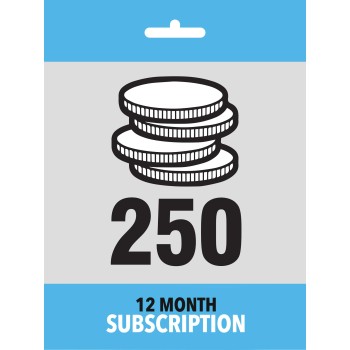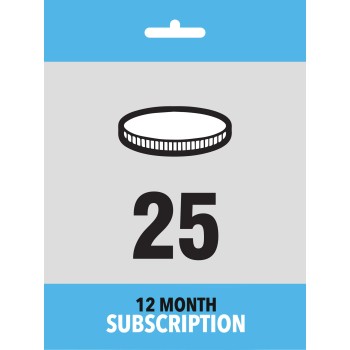Driving may be one of the most hazardous working activities in the UK
The government’s Work-Related Road Safety Task Group estimates that up to a third of all road traffic accidents involve someone who is at work at the time. This may account for over twenty fatalities and 250 serious injuries every week.
Managing the risks to employees who drive at work requires more than just compliance with road traffic legislation. The Health and Safety at Work etc Act 1974 requires employers to take appropriate steps to ensure the health and safety of their employees and others who may be affected by their activities when at work. This includes the time when they are driving or riding at work, whether this is in a company or hired vehicle, or in the employee's own vehicle. There will always be risks associated with driving. Although these cannot be completely controlled, an employer has a responsibility to take all reasonable steps to manage these risks and do everything reasonably practicable to protect people from harm in the same way as they would in the workplace.
Road deaths and serious injuries in the UK, through 2021 alone accounted for 1,608 deaths and 26,701 serious injuries according to Brake, the road safety charity, so any steps that can be taken to help reduce those statistics should be given serious consideration.
The lists below are practical considerations for employers.
Drivers should be:
1. competent and capable of doing their work in a way that is safe for them and others;
2. properly trained;
3. sufficiently fit and healthy to drive safely and not put themselves and others at risk;
4. provided with information that will help them reduce risk (e.g. recommended tyre pressures);
5. provided with appropriate advice on driving posture.
Vehicles should be:
1. fit for the purpose for which they are used;
2. maintained in a safe condition and fit for the road.
Journey planning should:
1. take account of appropriate routes;
2. incorporate realistic work schedules;
3. not put drivers at risk from fatigue;
4. take sufficient account of adverse weather conditions.
Good to Go Safety & TakeAIM provide fleet vehicle safety inspection checklists, designed to encourage drivers to conduct and record essential pre-drive vehicle inspections of their car or van prior to a journey. These walk round check sheets can be built into a fleet management policy and help to ensure the safety of the vehicle whilst reducing maintenance costs. This system helps employers meet their legal duty of care to ensure the safety of staff whilst they work, in accordance with various separate laws governing occupational driving including The Health & Safety at Work Act 1974, PUWER & The Road Traffic Act 1998.
The introduction of a systematic vehicle maintenance and safety programme allows fleet managers to receive a signed and dated vehicle inspection checklist which can be used as evidence of an active and up-to-date maintenance programme in the event of an accident. Some of the basic vehicle checks covered in the inspection include the engine department for oil, screen wash, battery etc; whilst lights, mirrors, tyres and documentation are amongst the various external checks and it even includes details on the driver to ensure their license is in date and that they are fit to drive – all of which can be seen to cover many of the considerations listed above in one simple and affordable solution.
The benefits of pre-drive checklists are numerous. They are designed to help identify defects and safety hazards before operation. When vehicles and their associated equipment (e.g. trailers) are not maintained, they have the potential to cause serious injury or, even death. Fleet safety and maintenance programmes should be high on the agenda for any business with multiple vehicles on their asset register (whether they be cars, vans, HGVs, buses, motorbikes, industrial vehicles, or bicycles). Having a system that allows these checks (on any vehicle or any piece of equipment) to be completed and recorded digitally is at the core of making that programme successful.
By completing a walk around check of the vehicle it significantly increases the possibility of spotting a fault (whether that be an under inflated tyre, a faulty indicator or something more serious). In addition to the safety benefits, pre-drive checks can also offer significant financial benefits. By spotting a minor issue early it enables maintenance to be planned at a convenient time and prevents the need for extended downtime that would likely occur if the fault were allowed to develop over time. As minor issues can often be fixed on-site, pre-start checklist inspections can also help prevent expensive costs associated with roadside or off-site breakdowns (e.g. call-out fees, towing fees or shipping costs for replacement parts sent to a remote location).
Providing drivers with the tools to complete their inspections helps to promote a strong culture of workplace safety and can give employees a sense of being valued and cared for by their employers.
Using TakeAIM allows companies can add all of their vehicles and equipment to an asset register, schedule frequency of inspections and assign registered users to them. Drivers can then use the TakeAIM app to complete their inspection digitally on their smart phone. Each step of the inspection is time stamped to ensure employees are not simply ticking boxes rather than conducting an efficient inspection. They can add photos for more detailed reporting and the use of digital signatures or unique usernames and passwords provide user accountability when completed pre-start checklists are submitted.
Once the inspection has been completed and saved, the checklist can be viewed by management on their dedicated company dashboard where they can also analyse findings. If a fault/advisory has been raised during the inspection, then management can receive an email notification – allowing them to view the concern and act accordingly to minimise any disruption or delay in rectifying the issue. Management is also able to see if any scheduled inspections have been missed.
By going digital it allows faster completion of inspections and enhanced reporting capabilities through the addition of photos; it removes the risk of late, lost, or illegible checklists that is associated with paper checklist; it ticks an environmental box by going paperless and reducing paper and printing costs; it streamlines the administrative processes to increase efficiency.
Inspecting your vehicle (whether for work or personal use) should be part of your daily routine. Never overlook the importance of checking it as it could save your life and the lives of others. Taking a few extra moments to complete some basic checks could mean the difference between making it to your destination or not.
Graham Halliday
Product Manager
Good to Go Safety & TakeAIM
Click here to download the Fleet Manager Advice PDF.
The government’s Work-Related Road Safety Task Group estimates that up to a third of all road traffic accidents involve someone who is at work at the time. This may account for over twenty fatalities and 250 serious injuries every week.
Managing the risks to employees who drive at work requires more than just compliance with road traffic legislation. The Health and Safety at Work etc Act 1974 requires employers to take appropriate steps to ensure the health and safety of their employees and others who may be affected by their activities when at work. This includes the time when they are driving or riding at work, whether this is in a company or hired vehicle, or in the employee's own vehicle. There will always be risks associated with driving. Although these cannot be completely controlled, an employer has a responsibility to take all reasonable steps to manage these risks and do everything reasonably practicable to protect people from harm in the same way as they would in the workplace.
Road deaths and serious injuries in the UK, through 2021 alone accounted for 1,608 deaths and 26,701 serious injuries according to Brake, the road safety charity, so any steps that can be taken to help reduce those statistics should be given serious consideration.
The lists below are practical considerations for employers.
Drivers should be:
1. competent and capable of doing their work in a way that is safe for them and others;
2. properly trained;
3. sufficiently fit and healthy to drive safely and not put themselves and others at risk;
4. provided with information that will help them reduce risk (e.g. recommended tyre pressures);
5. provided with appropriate advice on driving posture.
Vehicles should be:
1. fit for the purpose for which they are used;
2. maintained in a safe condition and fit for the road.
Journey planning should:
1. take account of appropriate routes;
2. incorporate realistic work schedules;
3. not put drivers at risk from fatigue;
4. take sufficient account of adverse weather conditions.
Good to Go Safety & TakeAIM provide fleet vehicle safety inspection checklists, designed to encourage drivers to conduct and record essential pre-drive vehicle inspections of their car or van prior to a journey. These walk round check sheets can be built into a fleet management policy and help to ensure the safety of the vehicle whilst reducing maintenance costs. This system helps employers meet their legal duty of care to ensure the safety of staff whilst they work, in accordance with various separate laws governing occupational driving including The Health & Safety at Work Act 1974, PUWER & The Road Traffic Act 1998.
The introduction of a systematic vehicle maintenance and safety programme allows fleet managers to receive a signed and dated vehicle inspection checklist which can be used as evidence of an active and up-to-date maintenance programme in the event of an accident. Some of the basic vehicle checks covered in the inspection include the engine department for oil, screen wash, battery etc; whilst lights, mirrors, tyres and documentation are amongst the various external checks and it even includes details on the driver to ensure their license is in date and that they are fit to drive – all of which can be seen to cover many of the considerations listed above in one simple and affordable solution.
The benefits of pre-drive checklists are numerous. They are designed to help identify defects and safety hazards before operation. When vehicles and their associated equipment (e.g. trailers) are not maintained, they have the potential to cause serious injury or, even death. Fleet safety and maintenance programmes should be high on the agenda for any business with multiple vehicles on their asset register (whether they be cars, vans, HGVs, buses, motorbikes, industrial vehicles, or bicycles). Having a system that allows these checks (on any vehicle or any piece of equipment) to be completed and recorded digitally is at the core of making that programme successful.
By completing a walk around check of the vehicle it significantly increases the possibility of spotting a fault (whether that be an under inflated tyre, a faulty indicator or something more serious). In addition to the safety benefits, pre-drive checks can also offer significant financial benefits. By spotting a minor issue early it enables maintenance to be planned at a convenient time and prevents the need for extended downtime that would likely occur if the fault were allowed to develop over time. As minor issues can often be fixed on-site, pre-start checklist inspections can also help prevent expensive costs associated with roadside or off-site breakdowns (e.g. call-out fees, towing fees or shipping costs for replacement parts sent to a remote location).
Providing drivers with the tools to complete their inspections helps to promote a strong culture of workplace safety and can give employees a sense of being valued and cared for by their employers.
Using TakeAIM allows companies can add all of their vehicles and equipment to an asset register, schedule frequency of inspections and assign registered users to them. Drivers can then use the TakeAIM app to complete their inspection digitally on their smart phone. Each step of the inspection is time stamped to ensure employees are not simply ticking boxes rather than conducting an efficient inspection. They can add photos for more detailed reporting and the use of digital signatures or unique usernames and passwords provide user accountability when completed pre-start checklists are submitted.
Once the inspection has been completed and saved, the checklist can be viewed by management on their dedicated company dashboard where they can also analyse findings. If a fault/advisory has been raised during the inspection, then management can receive an email notification – allowing them to view the concern and act accordingly to minimise any disruption or delay in rectifying the issue. Management is also able to see if any scheduled inspections have been missed.
By going digital it allows faster completion of inspections and enhanced reporting capabilities through the addition of photos; it removes the risk of late, lost, or illegible checklists that is associated with paper checklist; it ticks an environmental box by going paperless and reducing paper and printing costs; it streamlines the administrative processes to increase efficiency.
Inspecting your vehicle (whether for work or personal use) should be part of your daily routine. Never overlook the importance of checking it as it could save your life and the lives of others. Taking a few extra moments to complete some basic checks could mean the difference between making it to your destination or not.
Graham Halliday
Product Manager
Good to Go Safety & TakeAIM
Click here to download the Fleet Manager Advice PDF.






